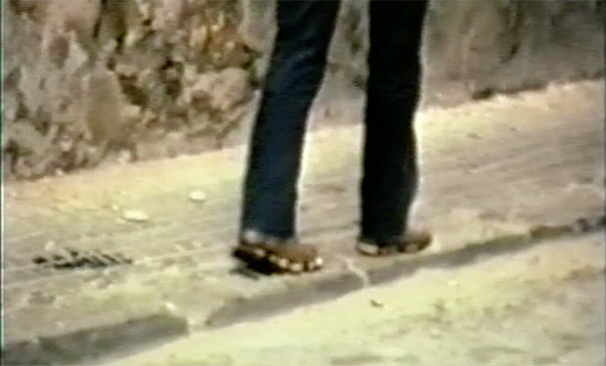By Celia Vara
How might feminist political action be when it is not overtly revolutionary? Not even public? How is the body valued in this kind of political action, particularly as a site for learning? And how does the environment (in its material and symbolic dimensions) provide a source for embodied practice and for diverse forms of personal and social engagement?
Celia Vara has curated this programme from research-creation with an embodied methodology, closely linked to the notion of kinaesthetic empathy, to show that our sense of bodily position and movement relates to our awareness of the space we occupy.
Kinaesthetic empathy allows us to relate to another person’s movement or sensory experience of movement (Sklar, Reynolds and Reason, Foster). This allows for the experimentation and creation of new bodily routines and thus a form of agency that allows for subtle somatic resistance under varying conditions of bodily repression. The forms of feminist liberation that we can observe in the works selected in this programme emphasise the body in the intimate and public environment as a central aspect of agency (McNay, Meynell, Coole, Sheets-Johnstone). In their work, it is precisely through movement (and thus kinaesthesia) that the body engages with its environment to gather knowledge about itself and the world as well as to intervene in it. These artists engage in perceptual practices that offer explorations of space and how the body occupies it. This allows for a subtle observation of the somatic emphasising different ways of liberating and situating the body. These forms of feminist liberation emphasise the body as the central aspect of agency. They are sensory instructions for feminist political statements.
Program Dar Cuerpo al Cuerpo I: Catalonia and the Basque Country
This selection takes up the pioneering historical videos and performances (1973-1981) made by the Catalan artists Fina Miralles and Eugènia Balcells, and the Basque artist Esther Ferrer during the last years of Franco’s dictatorship (1939-75) and the transition to democracy. Under Franco’s regime, critical thought and expression were prohibited, and artists devised bodily mechanisms as a form of protest and resistance. There was an emphasis on the sensory that provided an original access to the self. These artists were unique in that they focused on the body as an agent of liberation and self-expression under the acute restrictions on female bodies under the political dictatorship.
This programme will screen: Going Through Languages (1981, Eugènia Balcells), Duna and Deixada Anar de Cargols (1973) (two pieces from the series Translacions) and Petjades (1976) by Fina Miralles and an excerpt from Acciones Corporales (1975, Esther Ferrer).







